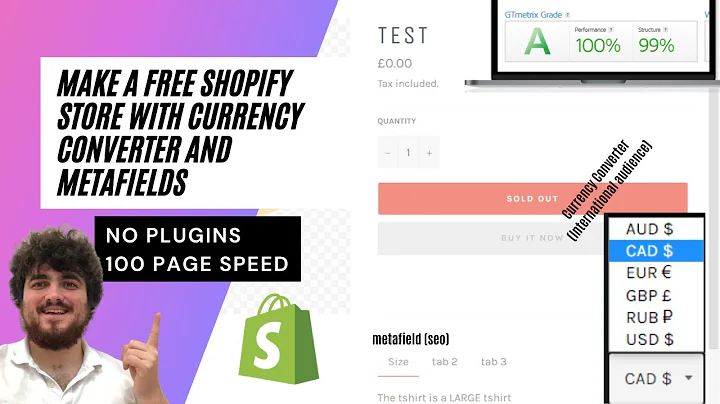Improve SEO Performance with Core Web Vitals Optimization
Table of Contents
- Overview of Core Web Vitals
- Importance of Core Web Vitals for SEO
- Understanding the Google Page Experience Score
- Factors Included in the Page Experience Score
- Mobile Optimization
- Having HTTPS on Your Site
- Guidelines Against Overboard Interstitial Pop-ups
- Core Web Vitals
- Core Web Vitals as a Ranking Algorithm
- Benefits of Optimizing Core Web Vitals
- Higher Rankings
- Improved User Experience
- Better Conversion Rates
- Detecting Core Web Vitals Issues
- Using Tools like Surfer for Optimization
- Considerations for Competitor Analysis
- Methods to Check Core Web Vitals
- Chrome User Experience Report (CrUX)
- CrUX Speed Report
- Google Search Console
- PageSpeed Insights Tool
- Lighthouse Reports in Google Chrome
- GTmetrix
- Reltio Comparisons
- Understanding the Main Metrics
- Largest Contentful Paint (LCP)
- First Input Delay (FID)
- Cumulative Layout Shift (CLS)
- Factors Affecting LCP, FID, and CLS
- Scripts, Ads, and Videos
- High-resolution Images
- Host Speed and Server Response Time
- Slow CSS and JavaScript
- Third-party Pop-ups and Widgets
- Old Themes and Improper Code Optimization
- Display Ads
- Solutions for Core Web Vitals Optimization
- Optimizing Hosting (Recommended: WPX Hosting and Cloudways)
- Setting Up Caching (Recommendation: WP Rocket)
- Implementing Lazy Loading
- Using a Cloud Delivery Network (CDN)
- Compressing Images (Tools: Short Pixel and Compressor.io)
- Optimizing Scripts and Removing Unnecessary Plugins
- Upgrading to HTTPS (HTTP2)
- Diagnosing and Fixing Cumulative Layout Shift (CLS) Issues
- Simplifying Core Web Vitals Optimization
- Using Speed Optimization Services (WP Speed Fix)
- Utilizing NitroPack for Premium Optimization
- Considerations for Core Web Vitals' Impact on Rankings
- Technical Complexity and Everyday Webmasters
- Importance for SEO Professionals
- Conclusion
Optimizing Core Web Vitals for Better SEO Performance
In this article, we will delve into the world of Core Web Vitals and explore everything you need to know about optimizing them to enhance your website's performance and achieve better SEO rankings. We will begin by providing an overview of Core Web Vitals and their significance in the realm of SEO. Next, we will discuss the Google Page Experience Score and the factors included in this score. We will then dive into the details of Core Web Vitals as a ranking algorithm and elaborate on the benefits of optimizing them. Moving forward, we will guide you through the process of detecting Core Web Vitals issues and explain various methods to check these metrics. Furthermore, we will explore the three main metrics: Largest Contentful Paint (LCP), First Input Delay (FID), and Cumulative Layout Shift (CLS). For each of these metrics, we will discuss the factors that can impact them, such as scripts, ads, images, host speed, and more. Additionally, we will provide comprehensive solutions for optimizing each metric and offer recommendations for hosting, caching, lazy loading, and content delivery networks. We will also cover tools for image compression and scripts optimization. Moreover, we will examine the impact of Core Web Vitals on search engine rankings, considering the technical complexity and the expectations for SEO professionals. Finally, we will conclude with a summary of the importance of optimizing Core Web Vitals and achieving a seamless user experience.
Overview of Core Web Vitals
Core Web Vitals are a set of specific website performance metrics that measure the user experience provided by a website. These metrics primarily focus on the loading speed, interactivity, and visual stability of web pages. The three main Core Web Vitals are:
-
Largest Contentful Paint (LCP): This metric measures the time it takes for the largest element on a webpage to become visible to the user. It indicates how quickly the main content of a page loads, which directly impacts the perceived speed of the website.
-
First Input Delay (FID): FID measures the time it takes for a webpage to respond to user interactions, such as clicking a button or entering text in a form. It assesses the responsiveness and interactivity of the website.
-
Cumulative Layout Shift (CLS): CLS measures the visual stability of a webpage by calculating the amount of unexpected layout shifts that occur during the loading process. It reflects the frequency and impact of any sudden changes in the positions of elements on the page.
These metrics are crucial for website owners and developers to understand as they have a direct influence on user experience. By optimizing these metrics, website owners can improve their website's performance, enhance user satisfaction, and potentially achieve higher rankings on search engine results pages (SERPs).






















